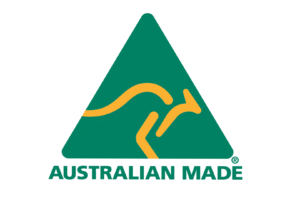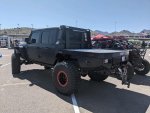Polling the board here to see what you all think about flatbeds.
With so many popular overland trucks coming with shorter beds (Gladiator, Ranger, Tacoma, Colorado), what are your thoughts on flatbed conversions to increase the useable space and functionality? Seems to be super popular in other countries, such as Australia where they even cut SUVs in half and convert to a tray. Your thoughts?
I've looked into this as this was my original vision for my Canyon, and in fact this is one of the reasons I purchased the Canyon, because the frame would match several Australian trucks so an easy "bolt it on" approach to a tray/canopy would be an option for me. But I ran into weight issues really quickly. It definitely can be done and there are a few places that offer Australian canopies here in North America, but it can get tight on weights fast.
What I found was that the Payloads of our mid-size trucks are typically only around 1500 lbs, which already is often much less than our Australian friends who see payloads of 1-ton or more in many of their equivalent mid-size trucks. The trucks appear to be identical in many respects, and these ratings appear to be based more on emissions control classifications than anything, but the sticker on the door is the sticker on the door, regardless.
Losing the tub will give you back probably 200-250lbs; adding the tray and canopy will be at least that back on, but often a few pounds more (an extra 100-200 lbs over a blank truck tub, depending on materials, is a "rule of thumb" that I read). The issue then gets compounded from all that space -- it's a full square metre of extra space with a typical tray and canopy system, and that space gets filled, so again more weight. Plus, canopy interiors are often built out with even more weight -- fridge slides, dividers, water tanks, etc. These things exist in non-Canopy builds too of course but it's important to know if you plan on adding these features before you decide, because it adds up to a lot of extra weight fast.
Overseas in Australia, many canopy builds come with a GVM upgrade, which is not a legally recognized option here in North America. Frames and axles are stiffened and gusseted, brakes are upgraded, and suspension is changed to match the new GVM. In some cases, chassis are extended too, and thus axles are relocated, which has a profound impact on weight carrying as it can get the bulk of the canopy over the rear axle. In many mid-size trucks, the rear axle is tucked up close to the back seat passengers, and the bulk of the cargo area is hanging off the back of the axle which isn't great for load hauling. Sure, you CAN do all these things to a North American truck, but it's not super common and at the end of the day, there's no regulatory framework that will officially change the specs of the cars (which they do have in Australia), so finding a ticketed shop to do all the engineering and work properly might be nigh on impossible unless anyone knows of a shop who is willing to be the "Manufacturer on Record" for any problems.
(As an aside, when AEV made a deal with Chrysler to get a handful of J8 Jeeps -- the mil spec JKs -- they did so with the need to find local dealerships or shops who would go through the hassle of being the "manufacturer of record" for the J8 sold to a civilian, which meant they were responsible for everything -- warranty, engineering, etc. -- and that was a hard sell and not many folks jumped on that from what I understand. And that was for a mil-spec vehicle, unmodified from a known manufacturer, Chrysler. It is because of this that I think it would be hard to find a shop that would modify a 4x4 the way the Aussies do and be "Manufacturer of Record" over here).
As it is, my build is right on the limit, but I'm not a solo traveller -- 3 people and two big dogs -- so while I couldn't afford the extra couple hundred pounds, a solo traveller likely will be able to make a canopy and tray work better.
Here's a few links of North American tray and canopy Providers that I looked into; both Mits and Norweld are extremely well tested in Australia and I wouldn't hesitate to purchase either product from a quality perspective. I would give the edge to Mits Alloy in terms of design (i.e. usability) over the Norweld as Mits has a lot of really neat modular options for their canopies, but there may be other features that are more important to you to compare.
MITS Alloy Flatbed Trays and Canopies are now available in the USA! Now you can get the same premium Australian made bed on your pick-up!

mitsalloy.com.au
Building Tacomas, Tundras, Jeeps, 4Runners, Trucks, SUVs and all 4x4s/4WD vehicles for overlanding, off-roading and all automotive applications. We customize your vehicle for the harshest terrain by specializing in off road accessories and overlanding. We can build your camper, flat bed or...

www.mainlineoverland.com




